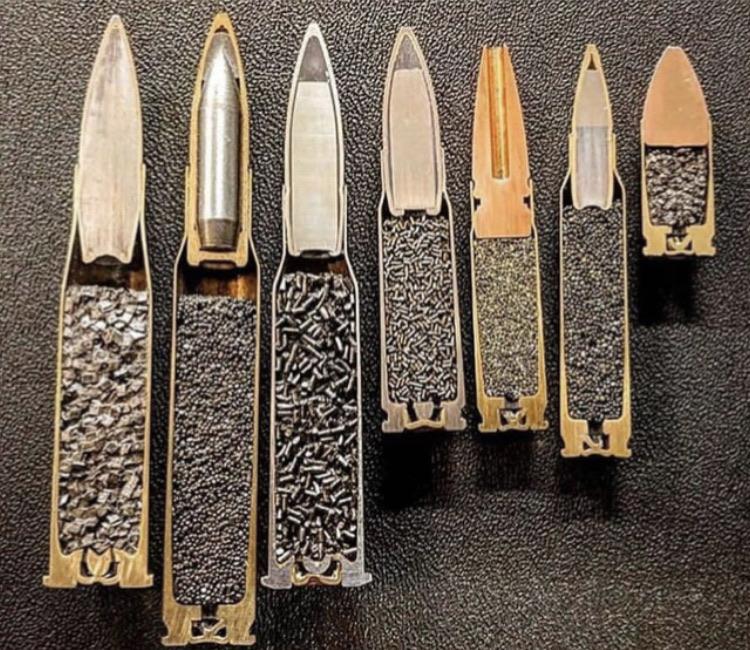This is a schematic animation of a Flintlock dating from the early 1700s.
The basic goal of the Flintlock is to create a spark that can light the gunpowder stored in the barrel of the gun. Flint is an amazingly hard form of rock. When it strikes the iron/steel, it generates sparks of red hot metal. These sparks ignite the gunpowder in the pan. The pan serves as the primer mechanism.

In Flintlock firing systems, the primer mechanism is built into the weapon itself whereas modern ammunition uses primers located in the cartridge/round. Modern cartridge/rounds have a primer (a small metal cup containing a primary explosive) that is inserted in the back of the round. When the firearm hammer or firing pin strikes the primer it creates a tiny explosion which ignites the propellant in the round.

Here’s some different caliber rounds cut in half. They each have their own type and amount of propellant. Different propellants have different burn rates, and are formulated for the various types of cartridges and their internal ballistic needs.
Back to Flintlock pistols: Here’s the loading of one.
This video is by capandball on youtube: “Shooting the Harper’s Ferry flintlock pistol” : https://www.youtube.com/watch?v=iBUBGR_TbCs
This is a great channel :)
Up close view of loading the pan with black powder from a powder horn. Black powder (old school gunpowder) is highly volatile and must be handled with extreme care. Modern weapons use various types of smokeless powders which are more stable.
Firing a Flintlock Pistol!
Super slo-mo!
sources:
Animated Flintlock mechanism: https://www.arc.id.au/Flintlock.html
Additional info: https://science.howstuffworks.com/flintlock2.htm
Centerfire ammunition graphic from wikipedia: https://en.wikipedia.org/wiki/Bullet
“Shooting the Harper’s Ferry flintlock pistol” by capandball channel on youtube: https://www.youtube.com/watch?v=iBUBGR_TbCs
Here’s more detailed instructions on the correct way to load a flintlock gun: https://woodsrunnersdiary.blogspot.com/2011/04/correct-way-to-load-flintlock-gun.html